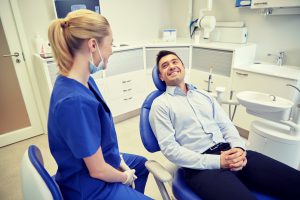How do we introduce the idea of salivary testing to our patients? As is the approach with every dental procedure or service we recommend for our patients, the primary consideration is excellent communication. Some recommendations are routine and no explanation is necessary, including fillings and fluoride, among many others.
When we introduce new procedures or services to our patients some explanation is appropriate. DNA salivary testing for bacteria is a good example. So what should we say when recommending salivary testing, and what it will do for the patient? One approach is to acknowledge that you, the practitioner needs to know the specific cause to optimize treatment planning; “Salivary testing is the only way for me to know the specific bacteria I am trying to control.” Another approach is to emphasize the need for the information; “Salivary testing is the only way for me to know what I am fighting, otherwise I am just guessing.”
The salivary test report will provide a specific, personalized recommendation for the choice of antibiotic, which will further individualize the therapy. This can be conveyed with verbiage such as, “The salivary test will identify the right antibiotic for your case of periodontal disease”, or, “Without testing, I am just guessing at the right antibiotic.” In all cases, however, use the report to display the graphic of the bacteria causing the infection, and let the report serve as a third, objective voice in your conversation.
The exact words you use to communicate this critical information will vary clinician to clinician. But your efforts will be rewarded through your patients’ continued loyalty. Patients trust the people who are taking care of them. The trust that has been cultivated by all members of the dental team will be enhanced when salivary testing is provided because it is most definitely in the best interests of the patient.
For more information on how to become an OralDNA Provider – scan HERE: 
- The Insights Provided by Salivary Testing - December 27, 2019
- I Don’t Need That, We’re Already Getting Good Results - November 29, 2019
- What’s Your Excuse? - August 30, 2019

